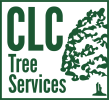The first official day of Winter is still a month away, but wintry weather has arrived in London, Ontario. With the snow that fell this week, winter hats, mitts, boots, and coats came out of storage. And while we can dress appropriately for the weather at hand, what about area trees?
Trees & Winter Weather
In the lead-up to winter, local deciduous trees stop producing chlorophyll. This brings on the beautiful fall colours we cherish in area trees. It also makes for a lot of manual labour once all those leaves fall, in cleanup, mulching, and the like. The tree itself goes into dormancy—a kind of hibernation state—waiting to be reawoken come the return of the sun and warmer temperatures in the spring.
Coniferous trees however, don’t shed their needles in winter. Hence the term ‘evergreen’, as these trees stay green all year round. Coniferous trees don’t go into full dormancy, like deciduous trees, but they do have reduced growth, which helps them to withstand the many months of winter.
This might be elementary for many of you, but how many people think about how winter affects their trees when they are looking to plant a new one? The problem comes when people choose non-native or non-local trees. While native species grown in this climate have coping mechanisms to help them survive our wintry blasts, other species are not always so resilient. Sometimes a tree’s survival has more to do with the nursery’s location where it was initially grown though. If a tree is grown in a different climate, it doesn’t matter whether it is native or not, it needs to learn how to adjust to a whole new climate. This is sadly the case when you look at many of the cheap, pot-bound Emerald Cedars which fill nurseries and big box stores every spring.
Emerald Cedars
Emerald Cedars are native to North America. These dense green shrubs are popular for use as hedgerows, due to their tall, columnar shape. They are a popular tree across Canada, and British Columbia grows many of them for export across the country. The problem arises though when those trees are shipped to other parts of the country.
Emerald cedars grown in BC are used to plenty of water and the cooler temperatures found West of the Rockies. Summers in Ontario, on the other hand, are dry and hot—not necessarily complementary to a tree grown in a different climate. While early spring weather in Ontario is similar to BC, by the time a tree started in BC is transplanted to Ontario, the shock can be hard to adjust to. Any transplanted tree or sapling requires extra care, but when that tree has to adjust to a whole new climate, the shock can sometimes be too much for a tree to acclimatize to.
For Emerald Cedars grown at local Ontario nurseries, you need to make sure to offer the usual amount of care for a newly planted tree; proper location (Emerald Cedars prefers full sun), adequate water, and well-drained soil. Trees grown in British Columbia are a different story though. As those cedars are used to higher rainfall, it is imperative to thoroughly water newly planted trees.
Another problem arises once winter hits. Emerald cedars grown in BC struggle to withstand our freezing temperatures and the drying winds that whither unprotected trees. A healthy, lush Emerald Cedar grown in BC and planted in Ontario in the early spring when temperatures are lower and rains plentiful, often doesn’t make it through its first harsh Ontario winter.
For those of you who fell prey to the cheap price tags that make BC grown Emerald Cedars so tempting, there are still things you can do to protect your trees. For starters, plant them in full sun. Make sure they get plenty of water in their first year of growth, right up to when the snow flies. A thick layer of mulch will help them to retain that moisture as well. Come winter time, protect them with a layer of burlap to protect them from heavy blankets of snow, which can bend or snap delicate branches.
The best advice that CLC Tree Services can offer though, is to choose locally grown, native species. Locally grown trees raised by reputable growers have a better chance to thrive and survive in the climate they are grown in. They might cost more, but in the long run, they will thrive and survive, saving you time, effort and money in the long run. Not to mention the added benefits they offer to the other local flora and fauna around them.
Do your research. Shop local. Buy local. You won’t regret it.


